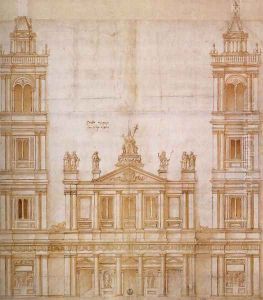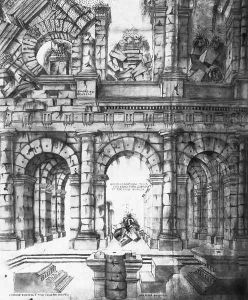Giuliano da Sangallo Paintings
Giuliano da Sangallo was a prominent Italian architect, engineer, and sculptor of the Renaissance period, born in 1445 in Florence, Italy. He came from a family of artists and craftsmen, which included his brother Antonio da Sangallo the Elder, and his nephew Antonio da Sangallo the Younger, both of whom were also renowned architects. Giuliano's real name was Giuliano Giamberti, but he, along with his brother, adopted 'da Sangallo' as a surname, inspired by the name of their family's property near Florence. This name later became synonymous with innovative architectural design during the Renaissance.
Giuliano's career was marked by a blend of traditional Florentine elements with the emerging principles of classical architecture, which he studied through ancient Roman ruins and the works of contemporary masters like Brunelleschi and Alberti. His architectural works include the design of churches, fortifications, and palaces. One of his most notable works is the church of Santa Maria delle Carceri in Prato, which is celebrated for its use of classical forms and geometric harmony, reflecting the ideals of Renaissance architecture.
Aside from his architectural achievements, Giuliano was also involved in military engineering and worked on the fortifications of several cities including Florence and Rome, showcasing his versatile talents. He served the Medici family, one of the most powerful and influential families of the time, and was involved in the design and construction of the Medici Villa in Poggio a Caiano, characterized by its innovative use of space and light, which had a profound influence on the development of Renaissance villa design.
Giuliano's contributions to architecture were not only limited to his constructions but also included his studies and drawings of ancient Roman architecture, which were influential in spreading the ideas of the Renaissance throughout Italy and beyond. His collaboration with other artists and architects of the time, including Michelangelo and Bramante, further exemplified the interconnectedness of the artistic community during the Renaissance.
Giuliano da Sangallo's legacy is a testament to the flourishing of architectural creativity and innovation during the Renaissance. He passed away in 1516, leaving behind a body of work that continues to be studied and admired for its beauty and historical significance.

